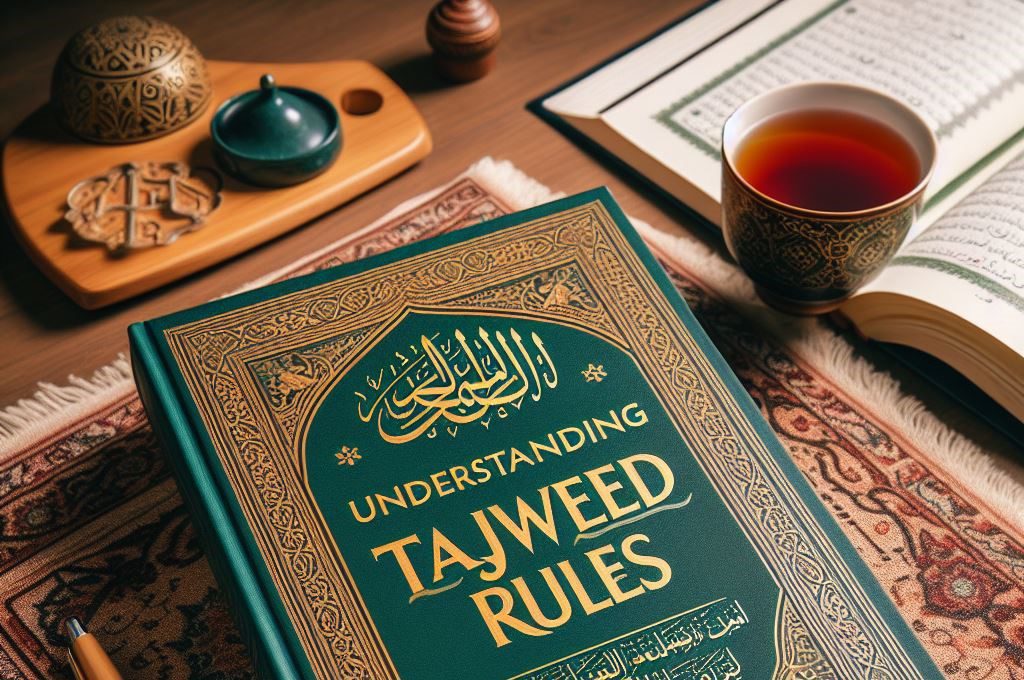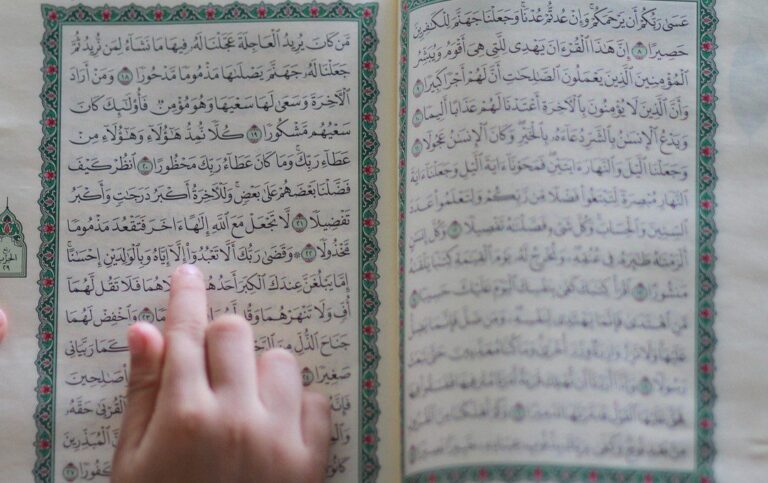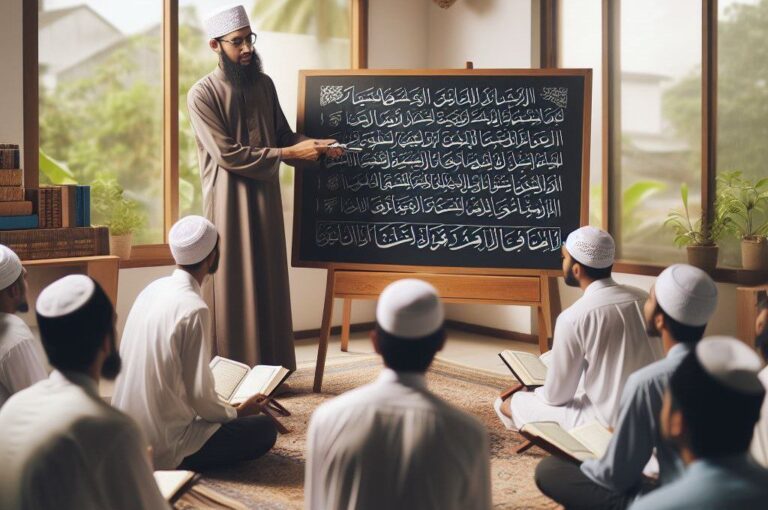Essential Tajweed Rules You Need to Understand
The Quran is not merely a book, it is the divine word of Allah. As Muslims, we must recite the Quran with utmost reverence and accuracy. One crucial aspect of proper Quranic recitation is mastering Tajweed rules. The holy Prophet Peace Be Upon Him said:
Allah does not listen to anything as He listens to the Quran recitation by a Prophet who recites it in an attractive audible sweet-sounding voice. [Al-Bukhari 7544]
This hadith reveals the importance of Tajweed. Tajweed is the set of rules and principles that govern the correct pronunciation of the Quran. Actually, Quran pronunciation is a huge topic to discuss. There is a complete Tajweed book and Tajweedi Qaida available in the market. In this blog post, we will explore some basic Tajweed rules to help you improve your Quranic pronunciation skills.
Some key Tajweed rules
In this article, we will discuss some basic rules of Tajweed. These rules are divided into two categories. First category is makharij and second one is sifaat. Let’s learn these simple rules of reading the Quran one by one.
1. Makharij Al-Huroof (Articulation of letters)

To pronounce the Quran accurately, it is essential to understand the different points of articulation, known as Makharij Al-Huroof or makharij tajweed. These are specific points in the mouth and vocal tract from where the sounds of Arabic letters originate. Examples of makharij include the throat (halaq), the tongue (lisan), and the lips (shafatain). Learning and mastering these articulation points are crucial for producing the correct sounds and pronunciation of the Quranic letters. To understand the significance of makharij, let’s take a closer look at some of the key pronunciation points.
Throat (Halaq)
Throat is the origin of six letters. “ء” (Hamza), and “ھ” (Haa) are performed through the lower part of the throat. “ع”(Ain), “ح”(Ha) are performed thorough middle part of throat and “غ”(Gaen), “خ”(Kha) are performed through upper part of throat.
Tongue (Lisan)
Tip of the tongue is the origin of many letters conjoining with teeth.”ط”(Taa), “د”(Daal), “ت” (Ta), “ث”(Saa), “ذ”(Zaal), “ظ” (Za), “ز” (Zah), “س” (Seen), “ص”(Saad). Whereas the root of the tongue, when touched with a soft palate near the uvula, is the origin of the letters “ق” (Qaaf), when it is touched with a hard palate then the letter “ک”(Kaaf) is performed.
Lips (Shafatain)
Lips are the origin of letters such as “ب”(Baa), “م”(Meem), “و”(Waw) and “ف”(Faa). These letters originated from the requiring precise and controlled movements of lips.
Nasal passage (Khayshoom)
Nasal passage contributes to the pronunciation of letters such as “م”(Meem) and “ن”(Noon). It involves controlling the flow of air through the nose while enunciating these letters.
Oral Cavity ( Jawf)
The oral cavity is the origin of the letters “ا” (Alif), “ی” (Yaa), and “و” (Waw).
2. Sifaat Al-Huroof (Characteristics of Letters)
In addition to understanding the articulation points, Tajweed rules also encompass recognizing the unique characteristics of each letter. Every letter has its unique properties. These characteristics, are known as “Sifaat Al-Huroof”. Sifaat refers to the specific characteristics or qualities of each letter in the Arabic alphabet. These characteristics include attributes such as Ghunnah (nasalization), Qalqalah (rebound), Tafkheem (heaviness), and Tarqeeq (lightness), among letters. Understanding these Sifaat is crucial for proper Quran pronunciation and recitation. Some major characteristics are given below for beginners:
Haroof e Tafkheem
Refer to the letters with a heavy or strong sound. These letters are “خ”(Kha), “ص”(Saad), “ض”(Zaad), “غ”(Gaen), “ط”(Ta), “ق”(Qaaf), “ظ”(Zaad)
Haroof e Halqi
These letters are pronounced from the throat. These include: “ء” (Hamza), “ھ” (Haa), “ع”(Ain), “ح”(Ha), “غ”(Gaen), “خ”(Kha).
Huroof e Maddah
These letters refers to the elongation of the specific points in the Quran. There are some basic rules for huroof e maddah letters.
- If Fatha comes before “ا” (Alif), Kasra before “ی” (Yaa), and Dhamma before “و” (Waw), these letters will be lengthened for one second.
- If standing Fatha , Kasra, or Dhamma comes on a letter, the letter will be lengthened for two seconds.
- If short madd (looks like a thin wavy line) comes on a letter, will be lengthened for three seconds.
- If long madd (looks like a thick arc) comes on a letter, will be lengthened for four seconds.
Qalqalah letters:
These refer to the bouncing sound produced by five letters if these appear with a sukoon. These letters are “ق”(Qaaf), “ط”(Taa), “ب”(Baa), “ج”(Jeem),”د”(Daal).
Rules of Raa(ر)
(Raa) “ر ” will be read thick in case of Fatha, Dhamma, double Fatha, double Dhamma appear on it. Whereas it will be read thin in case of Kasra and double Kasra appear on it.
Rules of Laam (ل)
(Laam) “ل ” of اللہ will be read thick in case of Fatha and Dhamma appears before (Laam) “ل” and will be read thin in case if Kasra appears before (Laam) “ل”. In all other cases it will be read thin.
Gunnah
Gunnah plays a significant role in Tajweed rules. There are some basic rules for gunnah. If two letters, “م”(Meem) and “ن”(Noon) appear with a tashdeed on them, involve controlling the flow of air through the nose while enunciating them.
- If “ن”(Noon) with Sukoon or Tanween comes, it will be categorized in four ways:
- Idhar:If haroof e halqi letters appear after “ن”(Noon) Sakin or Tanween, it will be read with clear sound (no gunnah). Example of idhar is:
حَاسِدٍ إِذَا
- Idgham: if “ی” (Yaa), “م”(Meem), “و” (Waw), “ن”(Noon) with tashdeed appears after “ن”(Noon) Sakin or Tanween, will be read by joining letters and performed gunnah. Example of idgham is:
مِّن نَّارٍۢ , مِن مَّارِجٍۢ
- Ikhfa: If anyone of these fifteen letters [“ط”(Taa), “د”(Daal), “ت” (Ta), “ث”(Saa), “ذ”(Zaal), “ظ” (Za), “ز” (Zah), “س” (Seen), “ش” (Sheen), “ص”(Saad), “ض”(Zaad), “ج”(Jeem), “ف”(Faa), “ق”(Qaaf), “ک”(Kaaf)] appears after “ن”(Noon) sakin or Tanveen, it will make a slight nasal sound. Examples of ikhfa are:
وَمِن ذُرِّيَّتِي , حَیَوٰةࣰ طَیِّبَةࣰ
- Iqlaab: If “ب”(Baa) appears after “ن”(Noon) Sakin or Tanween, these letters will be changed with “م”(Meem) and performed gunnah. Examples of iqlab are:
لَنَسْفَعًۢا بِٱلنَّاصِيَةِ , مِّنۢ بَعۡدِ
- If “م”(Meem) comes with a Sukoon (ۡ ) on them, it will be categorized in 3 ways:
- Idgham e Shafwi: if “م”(Meem), appears after “م”(Meem) Sakin, it will be read as one “م”(Meem) and will be performed gunnah. Example of idgham e shafwi is:
عَلَيۡهِم مِّدۡرَارٗا
- Ikhfa e Shafwi: if “ب”(Baa), appears after “م”(Meem) Sakin, it will be read with gunnah. Examples of ikhfa shafawi are:
هُم بِهِ , تَرْمِيهِم بِحِجَارَةٍۢ
- Idhar e Shafwi: If letters, other then “م”(Meem), and “ب”(Baa), appears after “م”(Meem) Sakin, will be read with clear sound (no gunnah). Example of idhar e shafwi is:
هُمۡ فِيهَا

Conclusion
Learning and implementing Tajweed is an ongoing journey that deepens our relationship with the Quran. By understanding the rules of Tajweed, we can recite the Quran correctly, respecting its divine nature. Let’s learn Quran with Tajweed rules and embrace the beauty of Tajweed, striving to perfect our recitation and experience the profound impact of the Quran in our lives. May our efforts in mastering Tajweed rules bring us closer to the Almighty and enhance our connection with His words.










